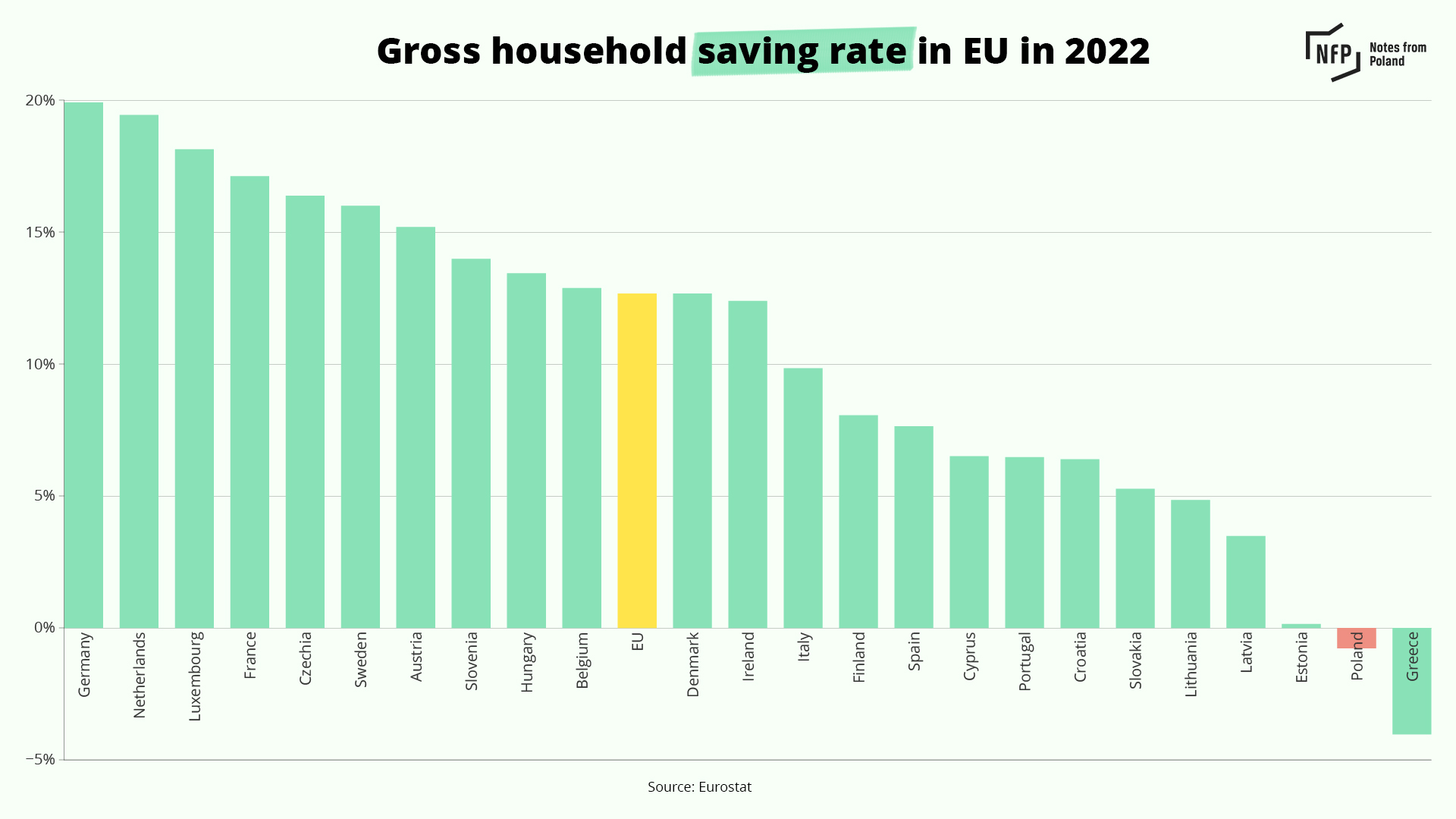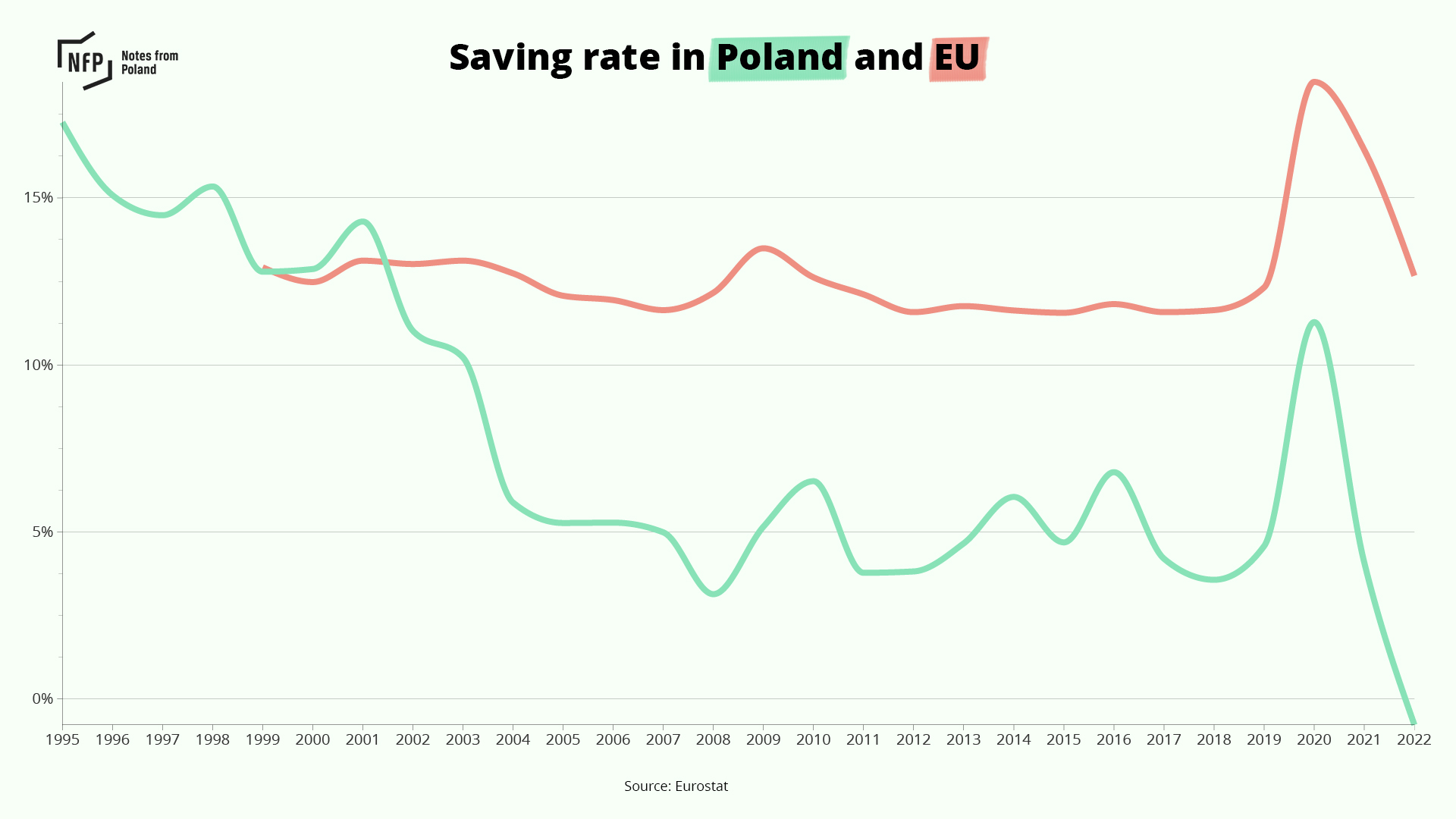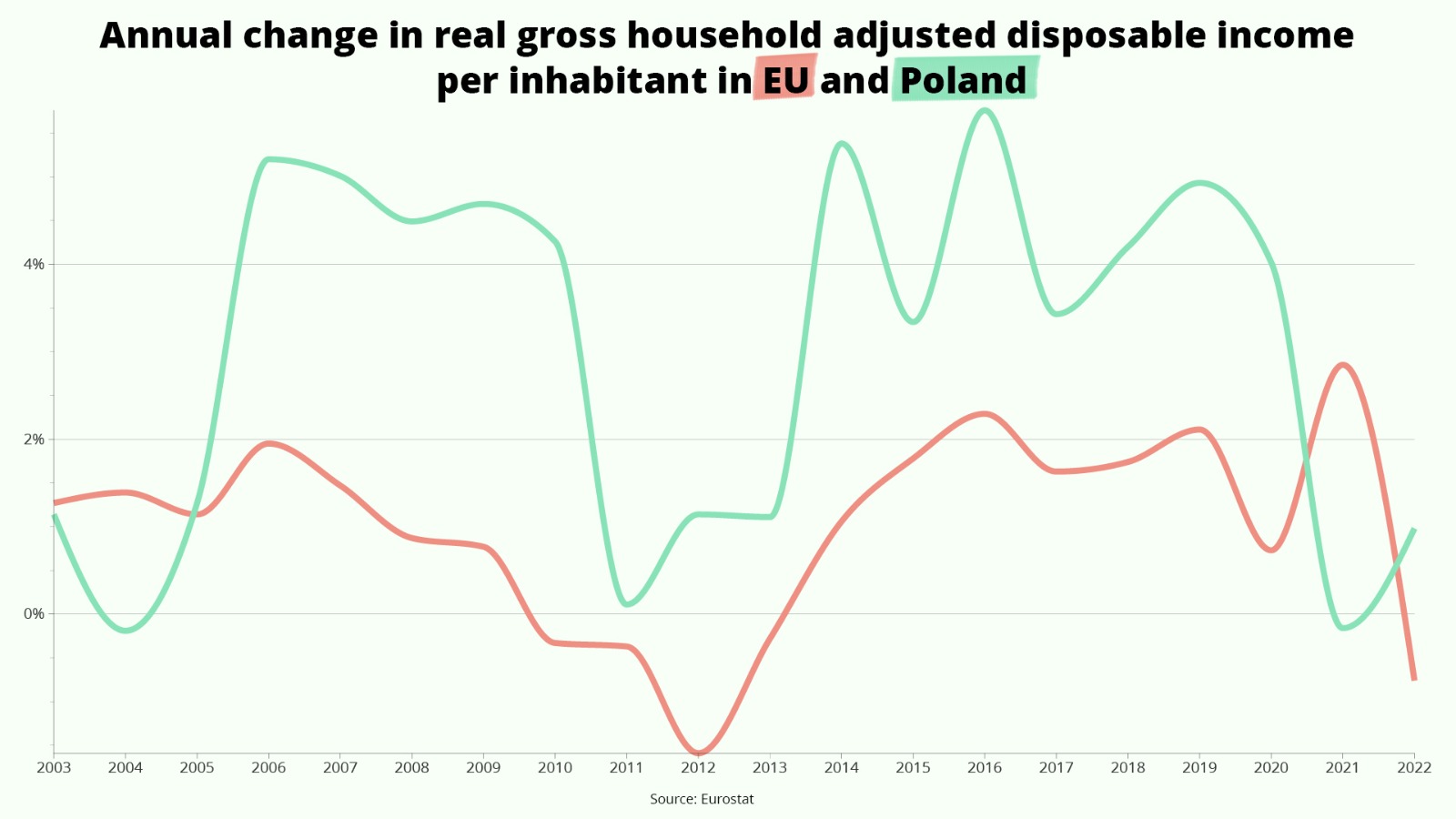Poland was one of only two EU countries – along with Greece – in which households had a negative savings rate last year – meaning they spent more than their disposable income. It is the first time since Eurostat’s records began that Poland’s savings rate has fallen below zero.
Across the EU as a whole, households saved on average 12.7% of their disposable income in 2022, new Eurostat figures show. The highest gross saving rates were recorded in Germany (19.9%), the Netherlands (19.4%) and Luxembourg (18.1%).
However, at the other end of the scale, Greece (-4%) and Poland (-0.8%) recorded negative rates, meaning households were not only unable to put aside money as savings but had to dip into previously accumulated savings or borrow money to cover their costs.

While most countries’ savings rates last year dropped significantly compared to the record pandemic years of 2020 and 2021 – when the EU averages were 18.5% and 16.4% respectively – in Poland’s case its drop brought the country below zero for the first time since 1995, the first year Eurostat recorded data for Poland.
Last year, Poland grappled with one of the EU’s highest inflation rates, an energy crisis, and an influx of refugees from war-torn Ukraine. In the first months of the conflict, Poles spent an estimated €2 billion on support for Ukrainian refugees out of their own pockets.
Before the pandemic, the average annual savings rate in Poland was just above 8%.

Although the savings rate in Poland has fallen, its real gross household disposable income per inhabitant rose by just under 1% in 2022, again bucking the European trend. The average disposable income in the EU fell 0.8% last year, while the euro area experienced a 0.9% drop.
In the case of the EU and the eurozone, it was the first fall since 2013. Poland, which over the past two decades has averaged significantly higher increases in disposable income per inhabitant, has seen a decline only twice – in 2004, the year it joined the EU, and in 2021 amid the pandemic.


Notes from Poland is run by a small editorial team and published by an independent, non-profit foundation that is funded through donations from our readers. We cannot do what we do without your support.
Main image credit: Oleksandr P / Pexels

Alicja Ptak is senior editor at Notes from Poland and a multimedia journalist. She previously worked for Reuters.


















